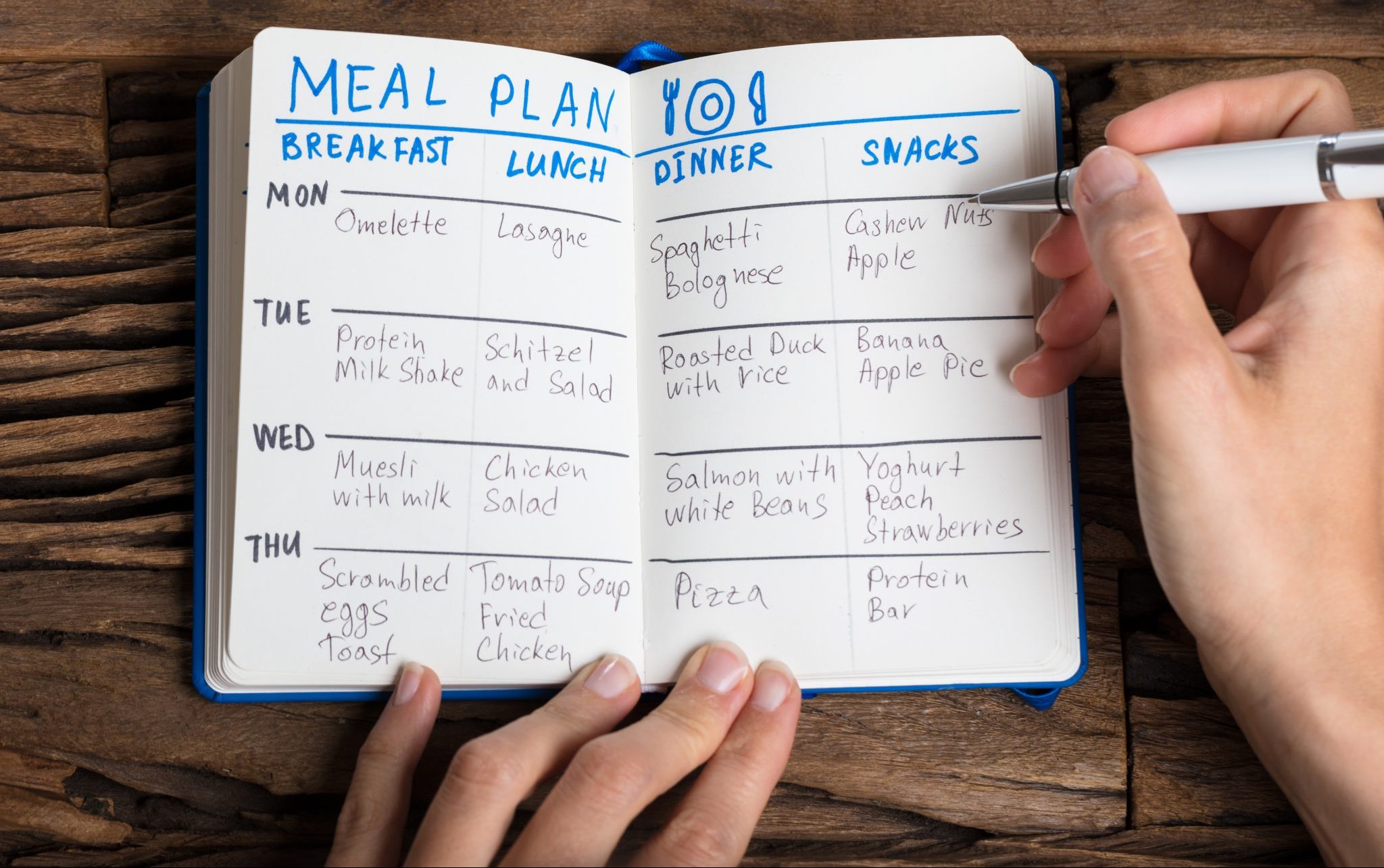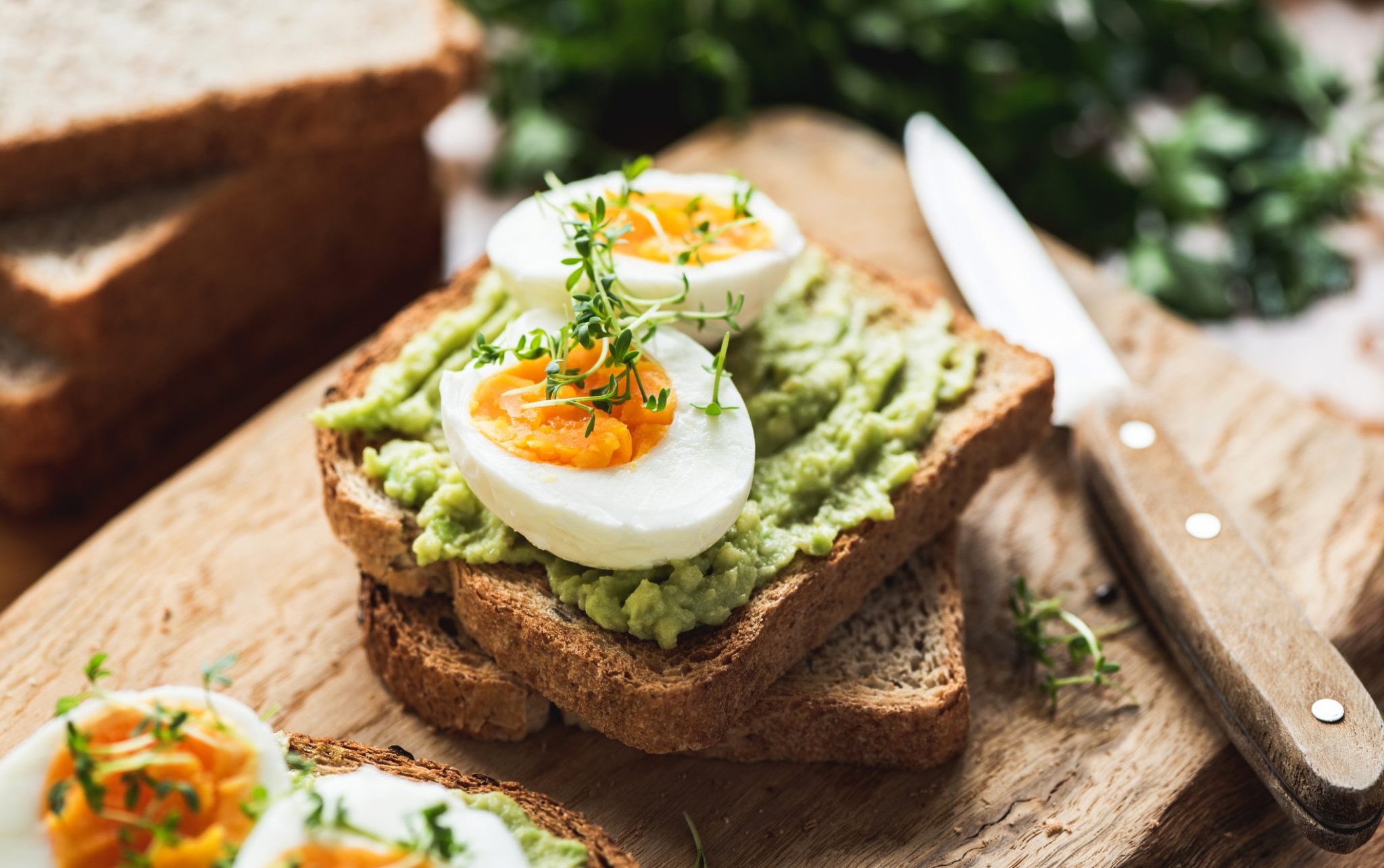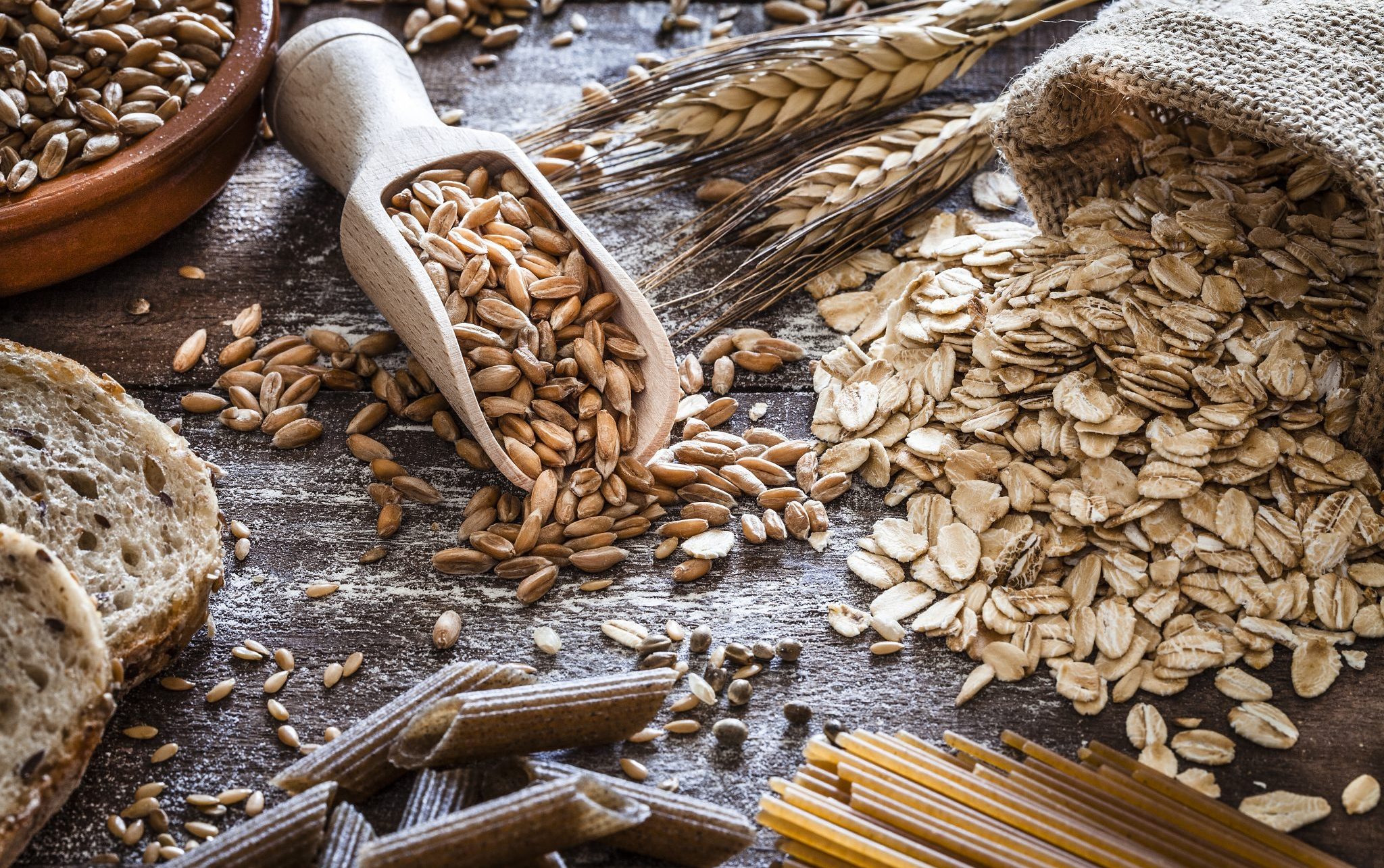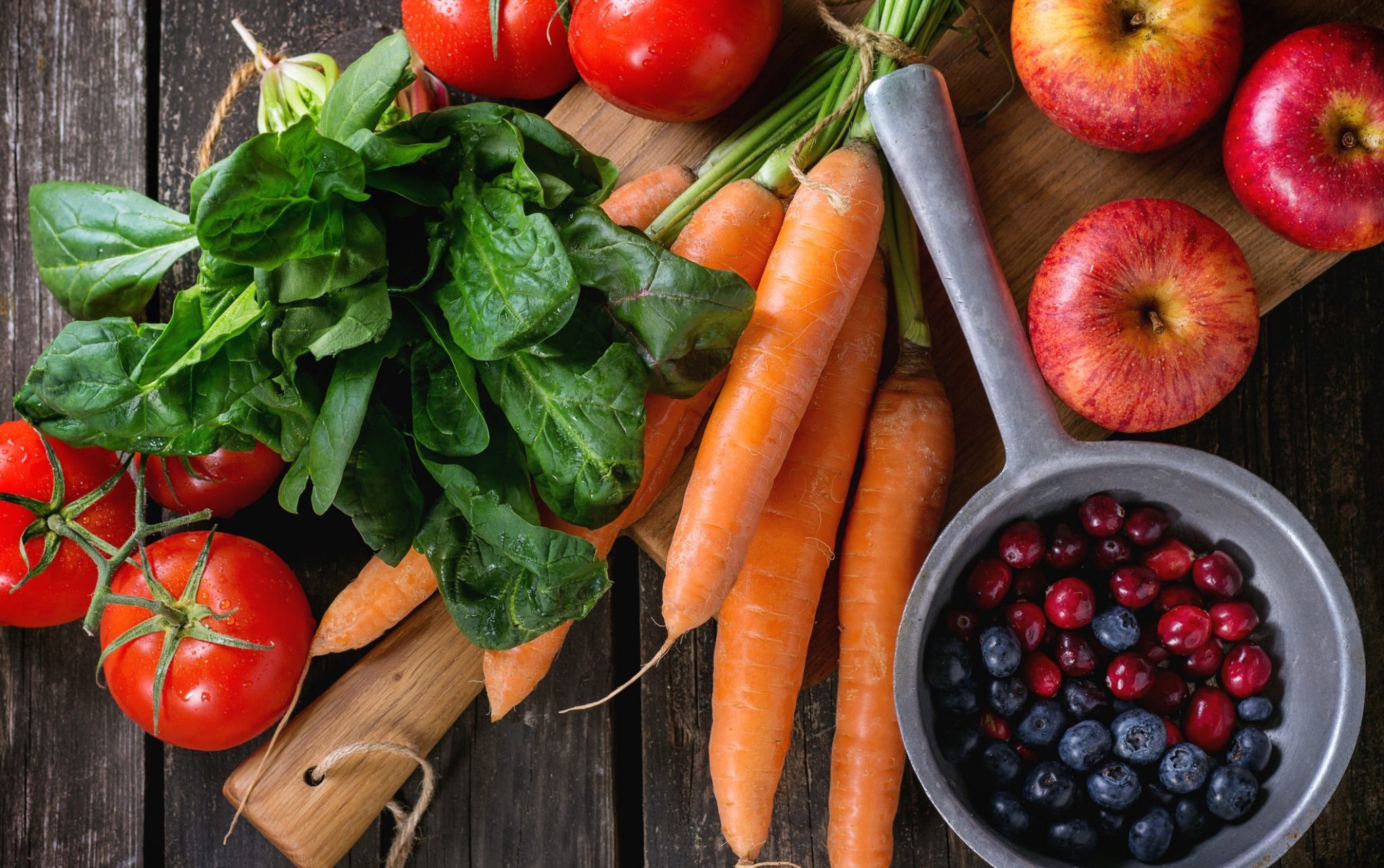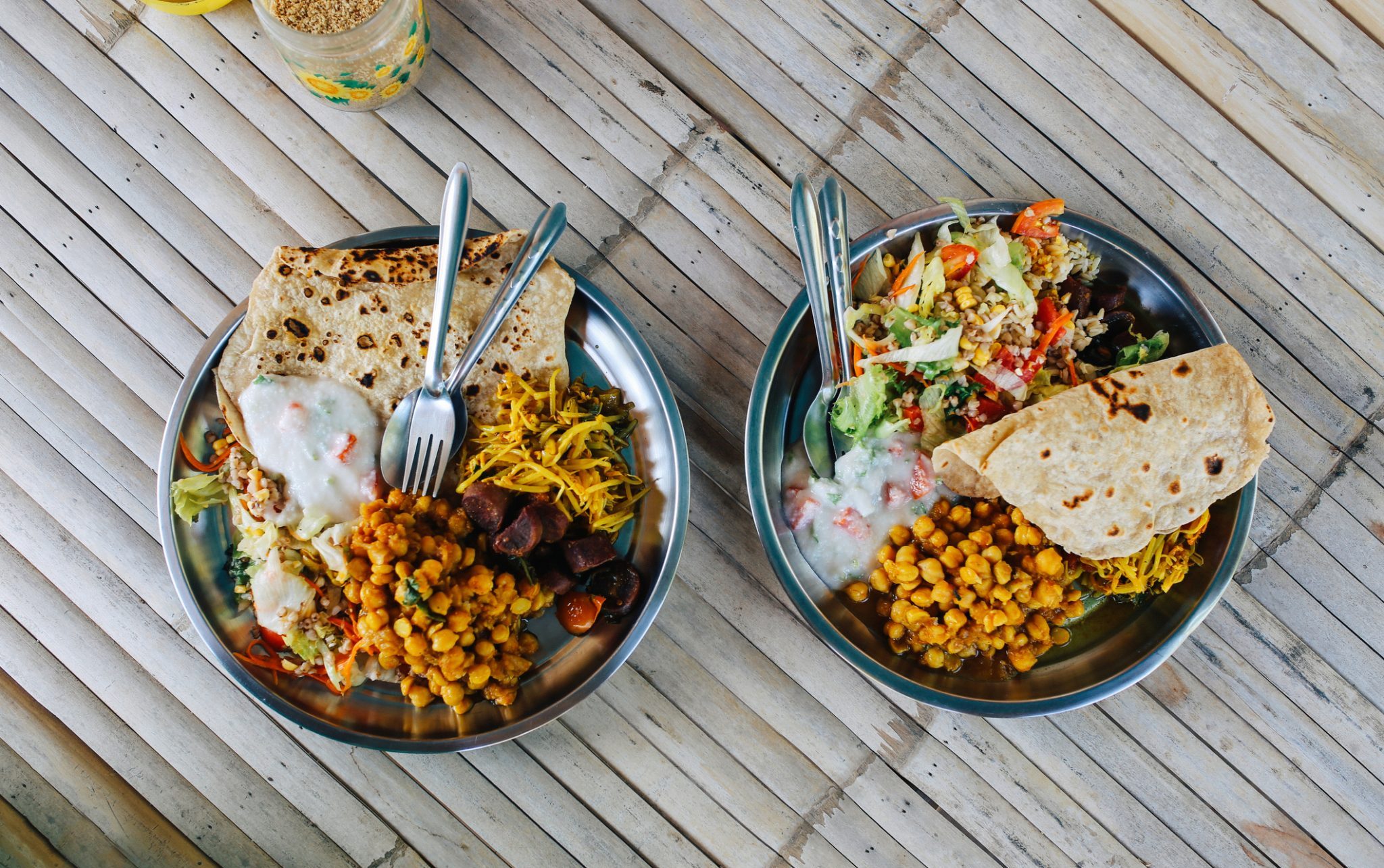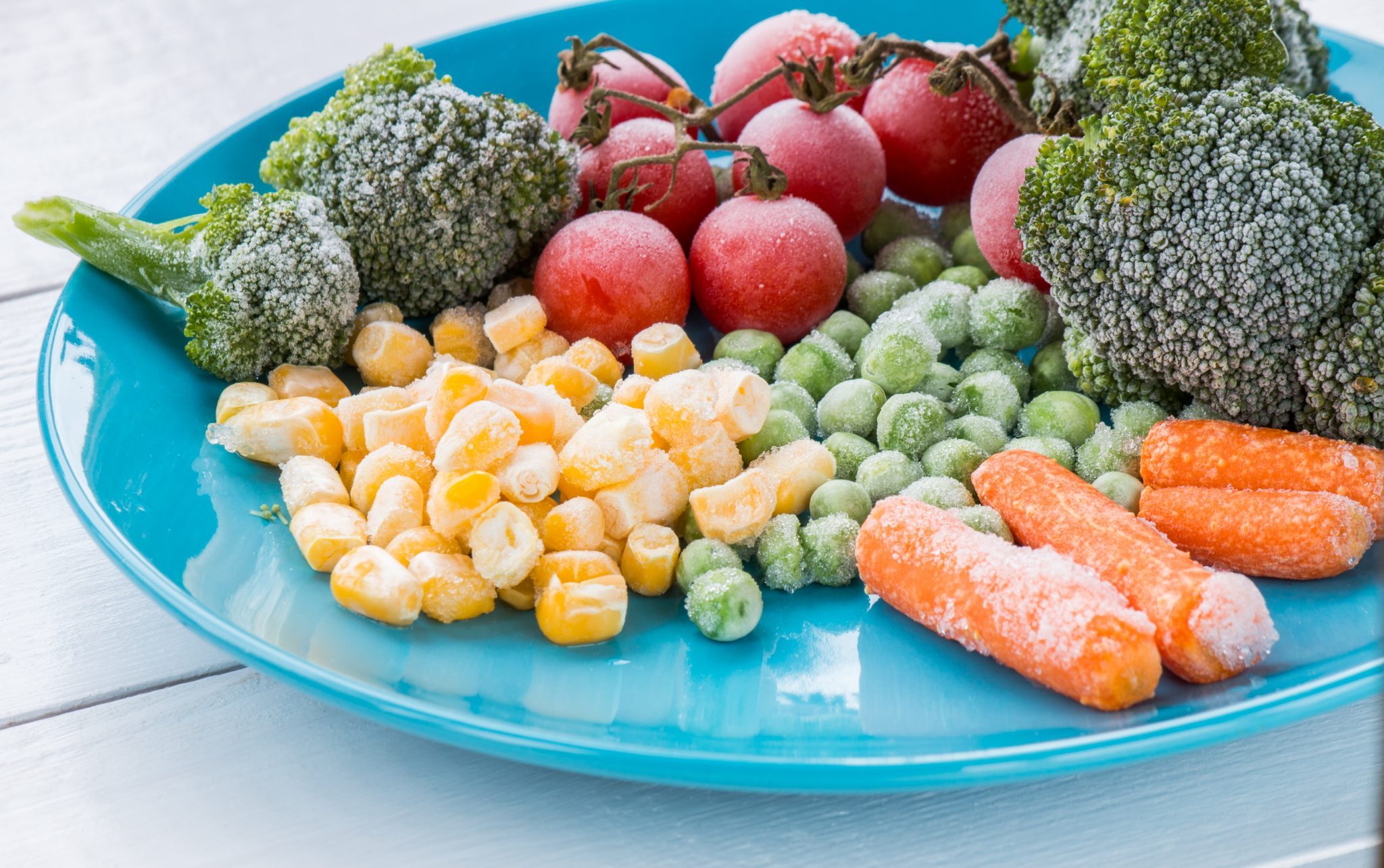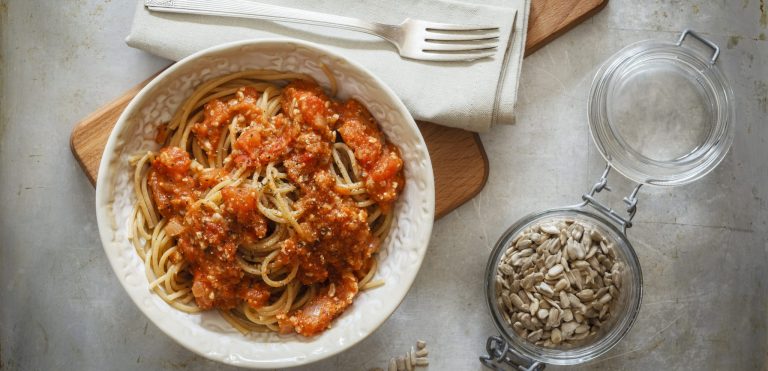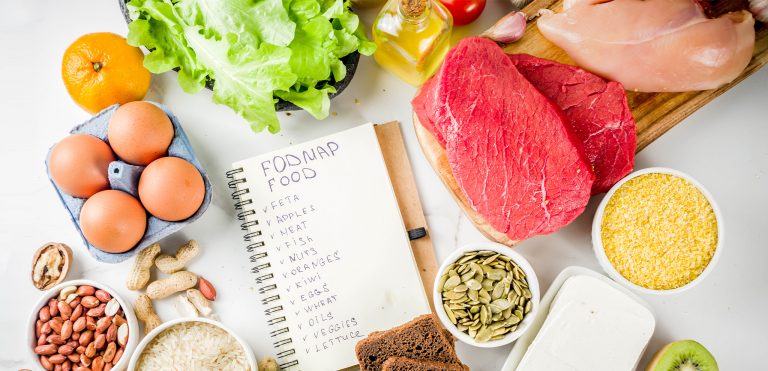This week, many of us are on lockdown due to the COVID-19 crisis that is sweeping the globe. With minimizing visits outside the home, including to your local supermarket, becoming the new normal, and social distancing in place, it makes sense to plan what to eat ahead of time. That’s why we created this handy how to meal plan for a week guide to get you through the hard times and keep nourished.
Top 10 How to Meal Plan Tips
1. Create a menu
It’s not surprising that this is step one of how to meal plan. And it’s the hardest. Creating that plan to eat doesn’t leave much room for spontaneity and this can be a challenge.
To combat it, you need to sit down and take the time (yes, it’s hard) to plan what you and your family will eat for the next week. This means planning which dishes you need to cook and what food you need to buy for them so that you don’t need to run to the shop mid-week.
When boredom kicks in, which it will if you eat the same dish for five days in a row, plan to try to mix it up with different meals as much as possible. You can choose flexible ingredients, such as carrots, potatoes, etc., that can fit in a variety of dishes and still not be boring.
2. Check the shop online beforehand for bargains
In your meal planning efforts, it’s a good idea to head online and check which offers are available at the moment. You can also look for flyers, discounts, and coupons to reduce how much you spend on your weekly shop.
Not only is this a cornerstone of how to meal plan on a budget, it can also give you some great ideas and inspiration for what you’d like to cook that week. Perhaps, you’ll see an unusual ingredient on sale or a new spice. Plan to add this to your menu and keep things interesting.
3. Go meat-free
Although meat is ’must-have’ for many people’s diets, it can prove a huge expense on your budget. Choosing one or more days a week to go meat-free can improve your health and save a little cash for your pocket.
This is especially useful if you have found yourself furloughed or unemployed due to COVID-19 or can give you a little extra cash for self-care when all this is over.
4. Add in grains and legumes
Grains, such as rice, and pasta, and legumes, such as chickpeas and lentils, are inexpensive and filling. They make a great addition to almost any dish and can be enjoyed as the center of the meal too.
You can add them to lots of different recipes, such as spaghetti bolognese, chickpea curries, lentil hotpots, etc. Lentils also deliver as a great source of healthy protein for your diet too, while those carbs can help you stay fuller for longer.
5. Keep it simple
Those gourmet recipes you see online or on TV might look delicious, but chances are they contain a million and one ingredients. And this isn’t good news for your weekly shop or your budget.
As much as possible, try to stick to ingredients that can be used in a number of dishes, or long-life dried spices that can be kept in storage for when you feel like spicing things up.
6. See what’s seasonal
It’s fresh, it’s tasty, and it’s available now – that’s right, it’s seasonal produce. Adding seasonal vegetables to your menu means you’ll check that ‘how to meal plan on a budget’ box, and also add fresh vitamins and minerals to your system.
Seasonal produce is often cheaper than something out of season, and it means you’ll be able to change and add ingredients to your menu and the seasons change. No boredom here, just delicious fruits and veg.
7. Make leftovers matter
There’s no doubting stale leftovers are no fun! But leftovers can be delicious too. For example, you can make a roast chicken dinner one day and use the leftover meat for sandwiches and then again for soup.
Or, if you’re on the non-meat eating boat, you can make a curry and eat it with various carbs – homemade oven chips, rice, or even pasta.
Repurposing food not only makes it more fun, it’s also good for the environment too as it reduces food waste.
8. Go large and freeze
Created a huge dish and don’t want to waste it? Don’t! Many foods freeze excellently for later usage. For example, you can create a huge shepherd’s pie and freeze half of it for later in the week.
This is also a great way to avoid getting bored by eating the same meal 3 days in a row. Instead, you split it up and eat it over the course of a week.
You can also keep frozen fruits and veggies to use in other meals, these are packed with nutrients that fill you up and give you that much-needed immune system boost while stuck indoors.
Note: cooked egg whites in any form, cucumber, fully cooked pasta or rice (partly cooked is ok), lettuce, mayonnaise-based dishes don’t freeze well.
9. Don’t cook what you won’t eat
It might look great on paper, but if you don’t like it, you’re unlikely to eat it and that’s a waste of both your cash and your time.
Create your meal plan based on what you love to eat on any normal week. We’re not saying fill it with cakes, pizza, and all other not-so-good for you things, but don’t completely deny yourself these pleasures either.
Adding in a little of what you love helps you stick to the meal plan and avoid heading back to the shop when you really don’t need to.
10. Snack sensibly
If that absence of heading to the office has left you snacking more than usual, you’re not alone. It’s easy to visit the snack cupboard when working from home, even just to break up the day with a little munch.
Or, perhaps, you have what seems to be an army (according to your food bills) of bored kids asking, “Mom, can I have a snack?” every five minutes. If this is the case, you’ll know that snack-time isn’t optional. You need to plan ahead here too.
First and foremost, follow our tips for avoiding boredom eating. Next, aim for healthy snacks – bananas, apples, and other fruits, these are filling and delicious. Next, go for seeds and nuts, they deliver that filling protein boost. Then, if that doesn’t satisfy, try dark chocolate or better yet add it to the fruit.
Need a fun new favorite? Melted dark chocolate and banana or dried cranberries. Yum!
Meal planning template
To help you get started, we’ve created these quick example meal planning templates, just for you. Here you’ll find 3 meal plans – general, keto, and vegan. Feel free to swap and switch any meals and ingredients you don’t like for those you do.
General meal planning template
Monday
Breakfast: Cottage cheese and berries
Lunch: Veggie, chicken and rice stir fry (go veggie and switch the chicken for tofu)
Dinner: Cheese on toast
Tuesday
Breakfast: Boiled eggs and toast
Lunch: Shepherd's Pie (go veggie and switch the mince for soya)
Dinner: Avocado salad
Wednesday
Breakfast: Porridge, banana and honey
Lunch: Caesar salad (replace the chicken with a tofu alternative to go veggie)
Dinner: Veggie bowl
Thursday
Breakfast: French toast
Lunch: Garden vegetable soup and bread
Dinner: Light salad of your choice
Friday
Breakfast: Porridge with cinnamon and rhubarb
Lunch: Vegetable skewers (add meat if you want to go non-veggie)
Dinner: Carrot and chickpea stew
Saturday
Breakfast: Cottage cheese and stewed plums
Lunch: Chickpea curry (meat optional) and rice
Dinner: Veggie bowl
Sunday
Breakfast: Omelet
Lunch: Chickpea burger and salad
Dinner: Filled pancakes (your choice!)
Keto style meal planning
Monday
Breakfast: Baked avocado and eggs
Lunch: Lemon and avocado salad
Dinner: Chicken oven-baked with lemon
Tuesday
Breakfast: Omelet with cheese
Lunch: Salad with almonds
Dinner: Baked chicken and pesto
Wednesday
Breakfast: Scrambled eggs with avocado and bacon
Lunch: Buffalo chicken salad
Dinner: BLT wrap in lettuce
Thursday
Breakfast: Omelet with bell peppers and feta cheese
Lunch: Arugula salad
Dinner: Caesar salad
Friday
Breakfast: Scrambled eggs with turkey
Lunch: Meat snack plate
Dinner: Spinach salad
Saturday
Breakfast: Baked avocado, eggs and bacon
Lunch: Lemon avocado salad
Dinner: Pan-fried broccoli and bacon
Sunday
Breakfast: Veggie omelet
Lunch: Avocado salad
Dinner: Chicken, bacon, and asparagus pan-fried
Vegan meal planning
Monday
Breakfast: Tofu, spinach and tomato scramble
Lunch: Mango and strawberry salad
Dinner: Peanut butter on toast
Tuesday
Breakfast: Overnight oats
Lunch: Salad with avocado
Dinner: Italian vegetable soup
Wednesday
Breakfast: nut butter and apples
Lunch: veggie roast
Dinner: Korean style baked sweet potatoes
Thursday
Breakfast: granola and smoothie
Lunch: Arugula salad
Dinner: roast veggies and rice mix
Friday
Breakfast: nut butter banana toast
Lunch: fruit salad
Dinner: broccoli soup and bread
Saturday
Breakfast: tofu scramble
Lunch: garlic green beans and tofu
Dinner: cucumber avocado salad
Sunday
Breakfast: grapefruit and melon
Lunch: bean burrito
Dinner: Kung pao tempeh
Meal plan template
Need a template to do your own meal planning? Microsoft Office has a number of awesome variants online that you can download and use with Microsoft Word to make your meal planning simple.


